The Nevada Tahoe Conservation District has been hard at work this summer implementing the Burke Creek Rabe Meadow Riparian Restoration Project (BCRMRRP). This project is the culmination of many years of planning, studies and design and will provide a significant expansion and enhancement of the riparian areas along Burke Creek in Rabe Meadow. Project construction activities are anticipated to end by late September. NTCD invites the public to join in on the restoration through the League to Save Lake Tahoe’s Forest Stewardship Day on Saturday September 28th. Information on this event can be obtained from the League’s website. As well, NTCD is pleased to provide the following informational overview of the project to help the public understand the happenings in Rabe Meadow this summer.
Kahle Ditch Area
The Burke Creek Rabe Meadow Riparian Restoration Project (BCRMRRP) started on June 19th, 2024 with work along the boundary of the Tahoe Beach Club and the US Forest Service parcel encompassing Rabe Meadow and adjacent to Nevada Beach. The goal of the project in this area was to decommission the Kahle Ditch and to remove fill that was placed in the wetlands along Burke Creek in the 1940s. The ditch and the fill date back to the construction of Tahoe’s first airport (Sky Harbor Airport) which opened in 1946 along the creek. The airport was only open for a short time, but the ditching of Burke Creek cleared the way for future development, including the Oliver Park Neighborhood and the Tahoe Beach Club. The upstream half of the ditch was previously decommissioned during projects in the 1980s and 1990s, but the remaining half mile of ditch along the USFS boundary with the Tahoe Beach Club stayed and acted as a direct conduit for urban runoff to Lake Tahoe. The ditch also continued to adversely impact the adjacent meadow by draining surface flows and groundwater from the meadow. The BCRMRRP filled in 2,200 linear feet of the ditch starting at the end of Kahle Drive. As part of project planning, NTCD also designed a restoration of the remaining 500 linear feet of ditch along Nevada Beach, but implementation in this area will have to be addressed with a future project as consensus on project design with key project partners could not be reached prior to construction this summer.
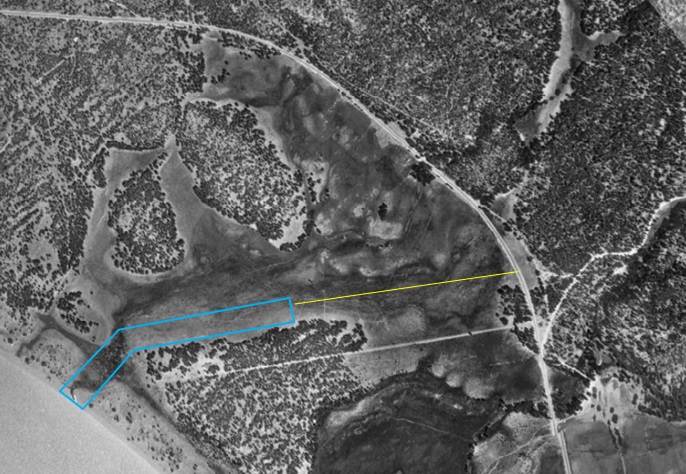
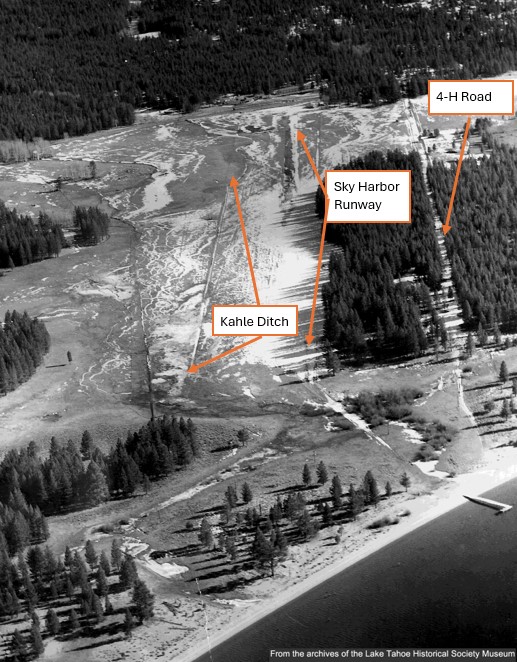
Besides filling in Kahle Ditch, the removal of fill on the south side of the ditch created an additional contiguous meadow on 2 acres of Tahoe Beach Club owned land. The project also removed old utility lines and connections along the ditch dating from the Tahoe Sands Mobile Home Park which was located on the site prior to construction of the Tahoe Beach Club. This area has been seeded with native wetland plants and is being irrigated to propagate vegetation.
On September 28, volunteers will gather through the League to Save Lake Tahoe’s Tahoe Stewardship Day to help plant nearly 500 aspen near the alignment of the old Kahle Ditch. The aspen will help screen development from the users of Rabe Meadow as well as provide shade for the meadow and food for beaver and other wildlife.

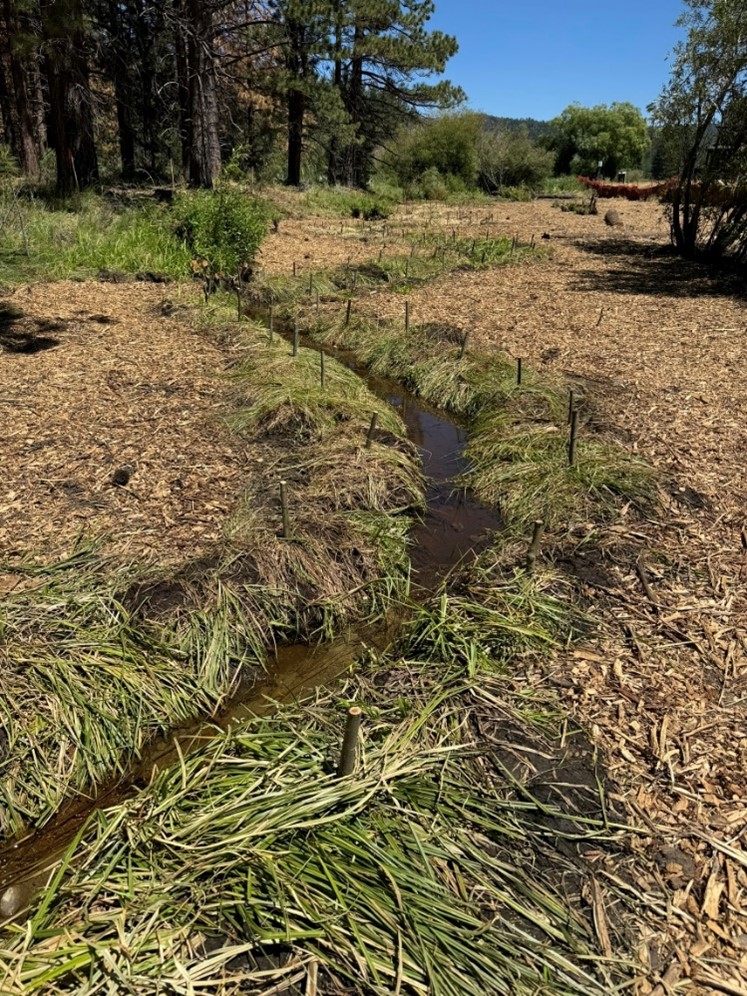
Jennings Pond
Jennings Pond was constructed during a US Forest Service project in the early 1980s. The pond is in fact part of the original area excavated for the foundation for a casino that was being built in the meadow prior to the Forest Service acquiring the site. Artificial ponds like Jennings have both benefits and drawbacks to the ecosystems and riparian areas of Tahoe. Concerns with the present condition of Jennings Pond include the highly suitable habitat that the pond provides for aquatic invasive species, effects the pond has on the natural geomorphology of Burke Creek and Rabe Meadow and flooding from the pond onto adjacent paths, roads and neighborhoods. Because of these issues, the BCRMRRP will reduce the depth of the pond, and take other actions in areas surrounding the pond to reduce flooding from the pond in developed areas. Post-project a shallower pond with increased habitat complexity will remain that will still provide habitat for the beavers and birds that users of the meadow so dearly love.
The work at Jennings Pond began in mid-August. The first action was to raise the Lam Watah Trail. The new trail will act as a water barrier if the pond level rises again, protecting the adjacent infrastructure from surface flooding including the Stateline to Stateline Bikeway and Kahle Drive. The trail crossing below Jennings Pond was decommissioned to protect a sensitive area. The fence was moved to make this closure permanent. Please help us by staying off closed trails. Permanent signage will be installed at a later date.
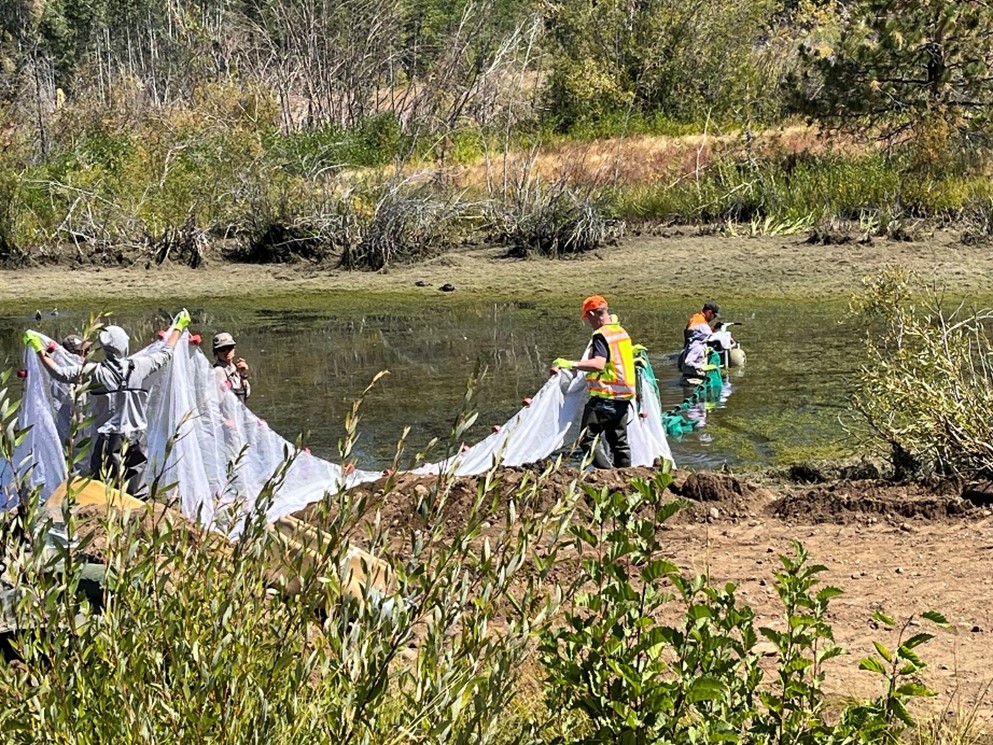
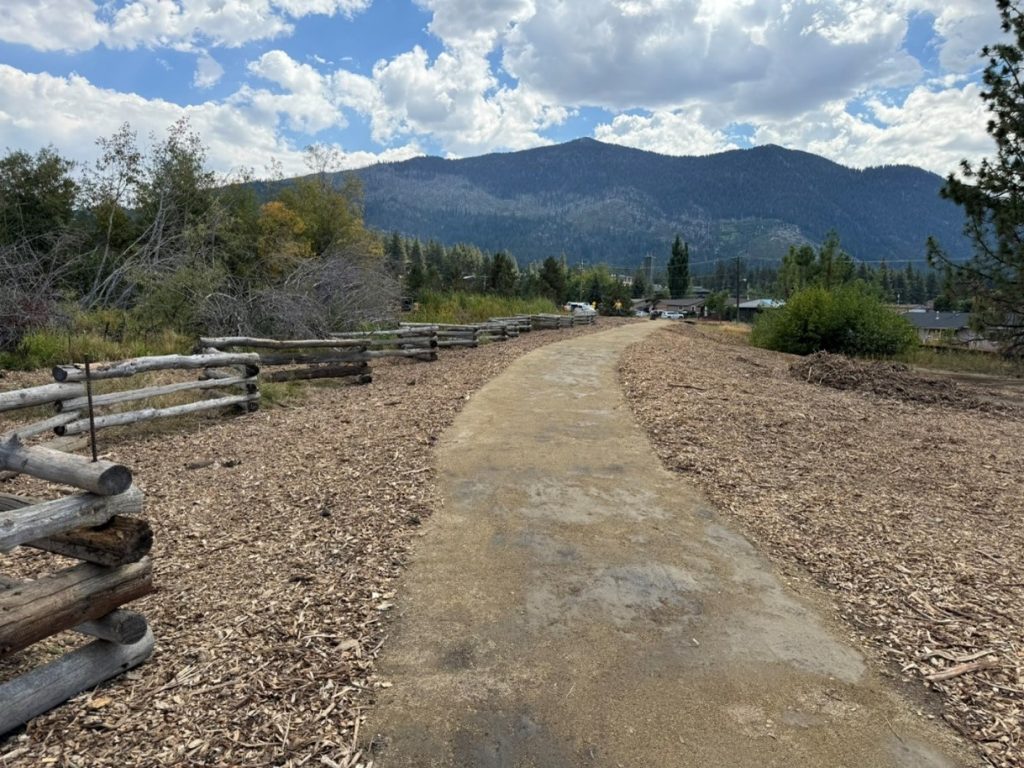
On Aug 21 pumping started at Jennings Pond to lower the water level. This date was chosen to have the least impact on the resident beaver colony. The pumps were outfitted with fish screens and fish were rescued from the pond and relocated downstream in Burke Creek.
Once the fish rescue was complete and the pond was dewatered, crews started filling the pond in with local dirt sourced from other areas of the project. Additional fill will be brought in from other projects in Meyers to complete the partial pond filling over the next two weeks. Once the partial pond filling is completed, the Burke Creek diversion will be decommissioned, and the pond will refill naturally with a shallower depth and additional habitat complexity. The Lam Watah Trail has been closed since Aug 15 and is estimated to be re-opened the week of September 23rd.
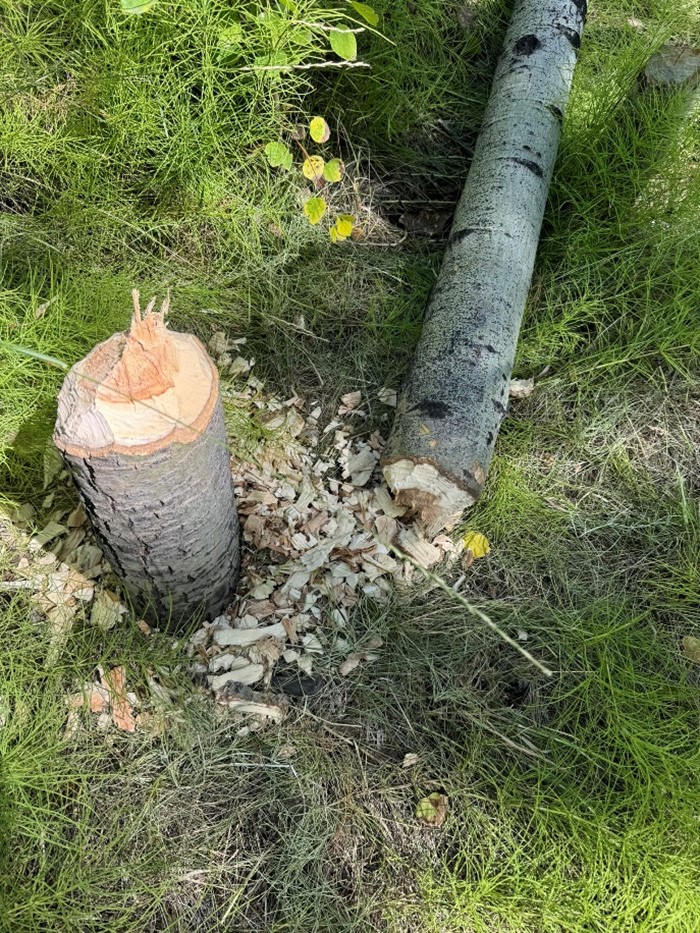
Where are the Beavers?
We know how much the community loves the beavers in Jennings Pond and our staff love them too! One of the major goals of the restoration is to maintain a healthy and thriving beaver population in Burke Creek and Rabe Meadow due to the amazing ecological benefits that beavers provide to the riparian areas they inhabit. During project design, NTCD did extensive research and consulted with other experts on beavers to make sure our local beavers would not be harmed by the restoration.
Prior to the start of construction NTCD surveyed Rabe Meadow to determine the number of beaver colonies and lodges in the project. Up near Jennings Pond, three lodges were identified (Beavers tend to build multiple lodges in one colony with only one lodge being used to rear Kits). The lodge that the beavers have been using during the summer of 2024 was found to be in an area the Beavers have dammed adjacent to the pond. Because of this, dewatering of the pond has not affected the lodge the beavers are using. The beavers have been observed continuing to use this lodge during construction and continue to be active in the greater project area.
Why are there trees dying in the meadow?
Visitors to Rabe Meadow this summer have probably noticed a large stand of dying pine trees in the meadow as they walk the Lam Watah Trail towards Nevada Beach. As well, visitors have probably noticed that part of the Lam Watah Trail near these trees has been flooded the past two summers. What is causing these things? The Restoration Project? The Forest Service? The Tahoe Beach Club?
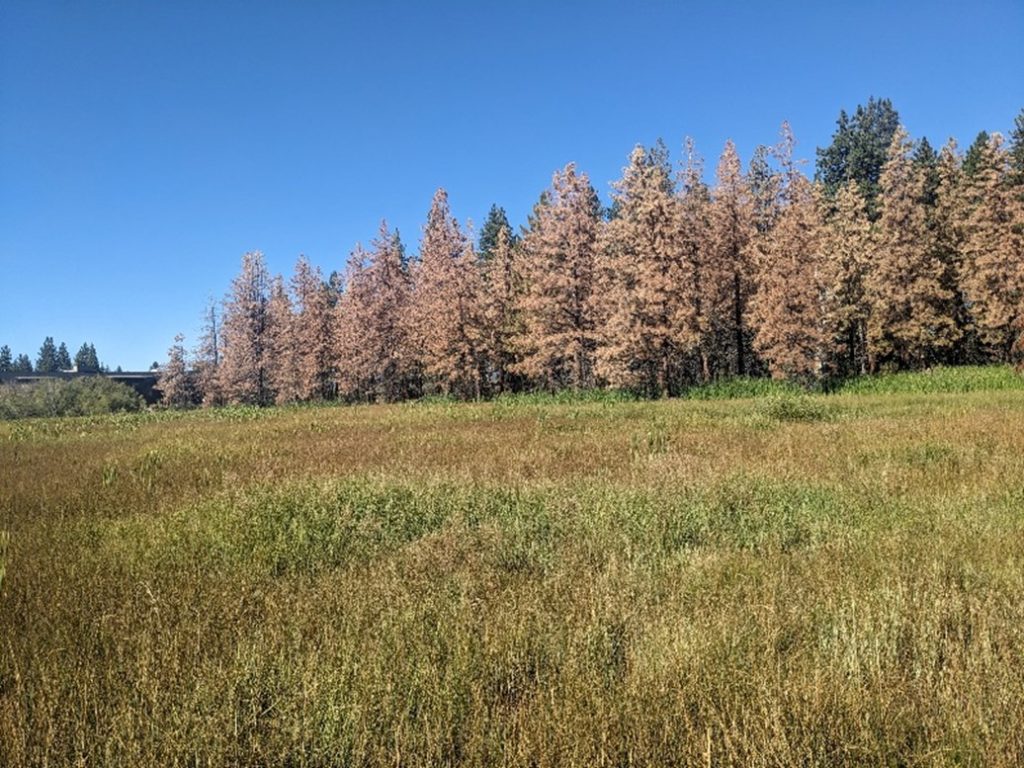
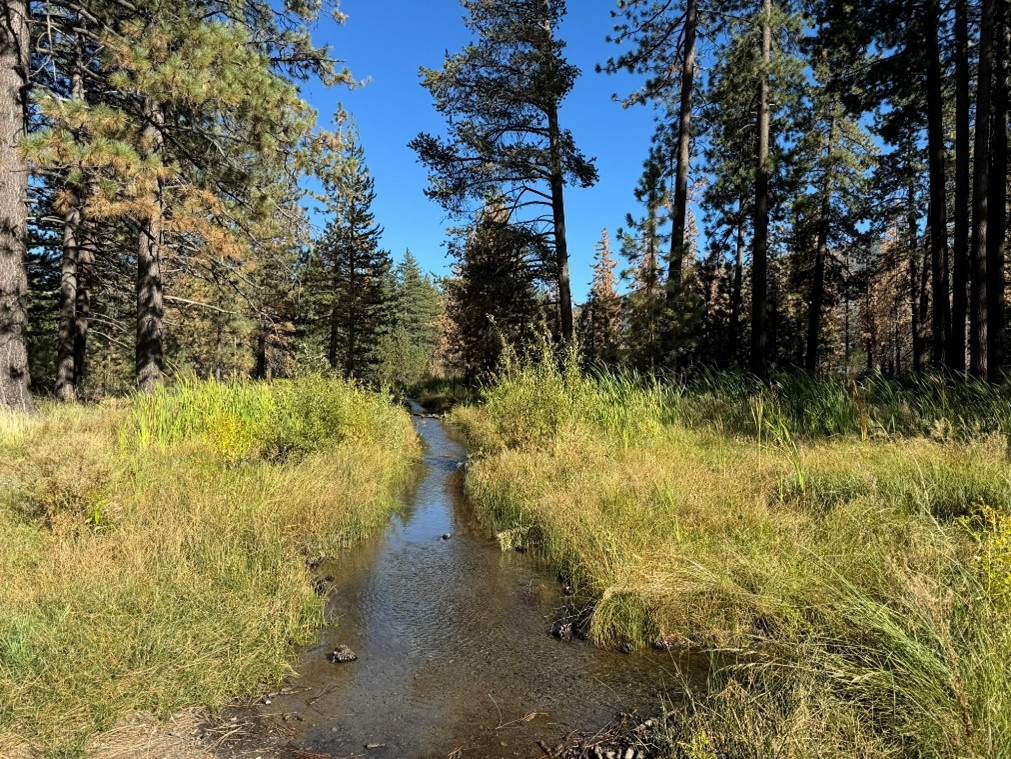
In fact, this is all being caused by beavers! In late 2022 the beavers began building a dam in the southern part of the meadow on Burke Creek. Because the meadow in this area is quite flat, this one beaver dam was able to flood a large area, likely reclaiming historic riparian areas that were previously drained and degraded by the Kahle Ditch.
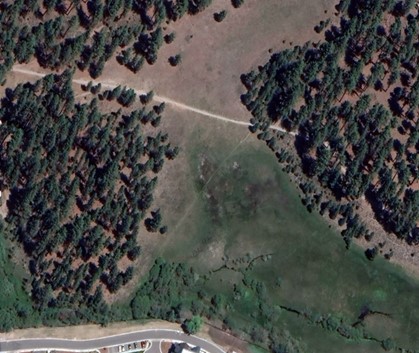
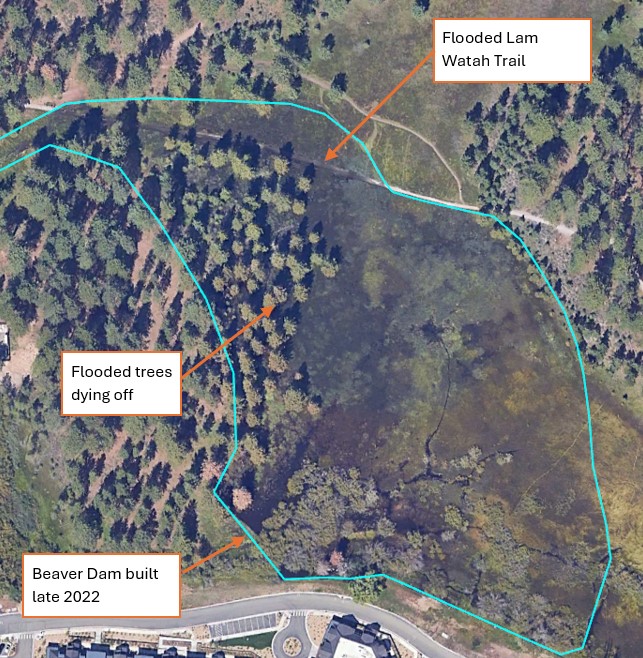
Now, people might be wondering, “Dying trees, is this a bad thing?”
While it is sad to see the trees die, these trees are in fact creating amazing new ecosystems for animals and birds. In fact, ‘drowned trees’ are considered to be one of the ecosystem benefits provided by beavers. Already this summer hairy woodpeckers, northern flickers, white-headed woodpeckers have been seen feeding in these trees, praying on the insects that have begun taking over the dead wood. As well, cavity nesters including white-breasted nuthatch, pygmy nuthatch, mountain bluebird, tree swallows and pygmy owl have been seen nesting in these trees. Inclusion of snags in a forested ecosystem especially along the ecotone is important to support biodiversity. As the trees progress through this death life stage, they will lose their needles and bark will slowly start to slough. Loose bark on snags together with cavities provide day and night roosting sites for bat species. The proximity of these trees to the open meadow/wetland area also will provide excellent roosting sites for hawks and bald eagles.
So what will happen to these trees? The US Forest Service is ultimately responsible for the management of this area, so they will be the ones to decide whether the trees are removed. NTCD is encouraging them to keep some of these trees, unless they are in areas where they may present a risk to recreators on the Lam Watah Trail. Besides the impact on the trees, the beaver flooding has also significantly increased the riparian vegetation in this area of meadow. Because of all of the ecological benefits to this area since the beavers built their dam in 2022, NTCD and the Forest Service hope that beavers will continue to be active in this area of the meadow in future years. Because of this, as part of the BCRMRRP several actions were taken to help ensure this flooding can continue without causing adverse impacts to infrastructure. First, a new culvert was constructed under the road in Nevada Beach Campground where increased flows have been caused by the beaver flooding. Second, a new reroute of the Lam Watah Trail across the meadow was permitted through the project which the Forest Service plans to construct in 2025.
How You Can Help
Share Information: Share this information with friends, neighbors, and fellow nature enthusiasts.
Sign up for Tahoe Stewardship Day: Join the restoration effort firsthand.
Respect Trail Closures: Protect sensitive areas and allow restoration efforts to take root by following posted signs.
Leave No Trace: Pick up after pets, pack out trash, and respect the natural environment during your visits to Rabe Meadow.